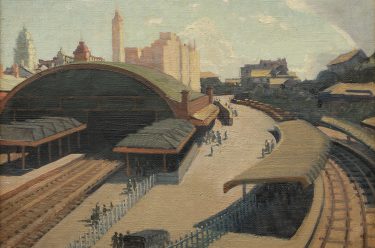We look back to when Brisbane’s Lone Pine Koala Sanctuary was established in 1927 by the Reid family as a safe refuge for sick, injured, and orphaned koalas, it was the first such sanctuary of its kind, beginning with just two called Jack and Jill, since then it has grown from these original koalas to over 70 species of Australian native wildlife.
Lone Pine Picnic Park and Native Fauna Zoo as it was originally named (the name change to Lone Pine Koala Sanctuary was made in 1964 by new owners the Robertson family), was established the year the Model T, sold by the Ford Motor Company ended production, replaced by the Model A. As demand grew for cars in Australia Ford Motors Australia was established in 1925 followed by General Motors Australia the following year. This increased availability of the car allowed for a surge in recreational and leisure driving, and with the opening of the unique picnic park and zoo made the trip a destination for families (illustrated) and artists looking for inspiration further afield.
Lone Pine Picnic Park and Native Fauna Zoo 1927
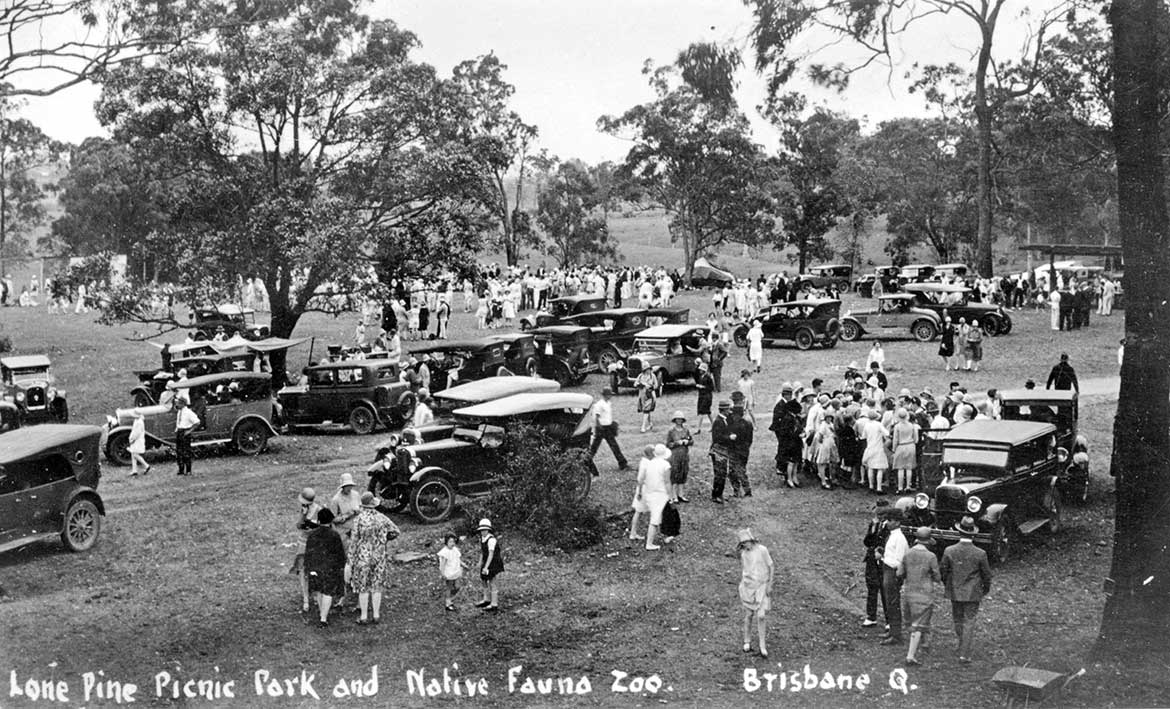
Lone Pine 1938
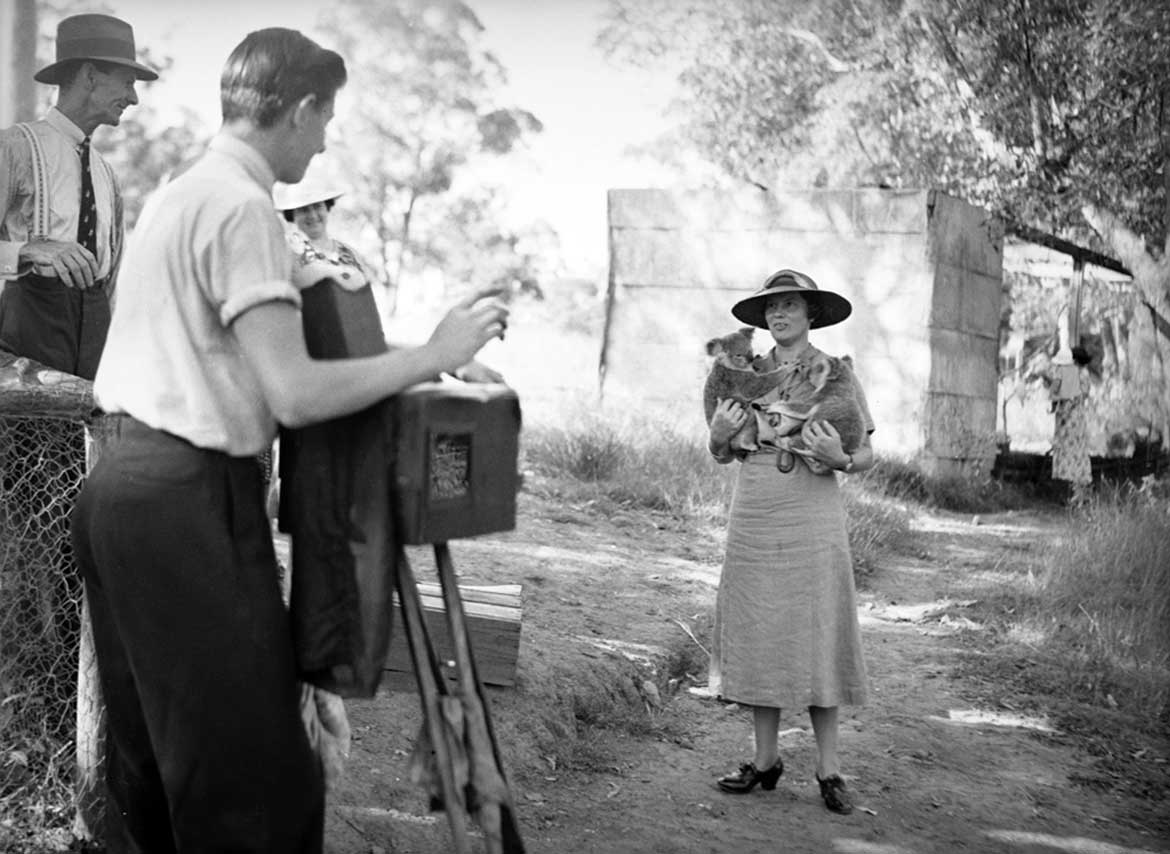
The Sanctuary located at Fig Tree Pocket is named after a huge Hoop Pine — Queensland’s tallest native tree — that was planted by the Clarkson family in 1867, their cotton farm was where Lone Pine is today. Early settlers moved to Fig Tree Pocket from the 1860s, first for its timber then for farming and it is believed that the suburb just 9km south-west of central Brisbane, was named after a remarkably large fig tree (illustrated), with the area bounded on three sides by the river, thus creating a land ‘pocket’ (illustrated).
ARTWORK STORIES: Delve into QAGOMA’s Collection highlights for a rich exploration of the work and its creator
Moreton Bay Fig 1866
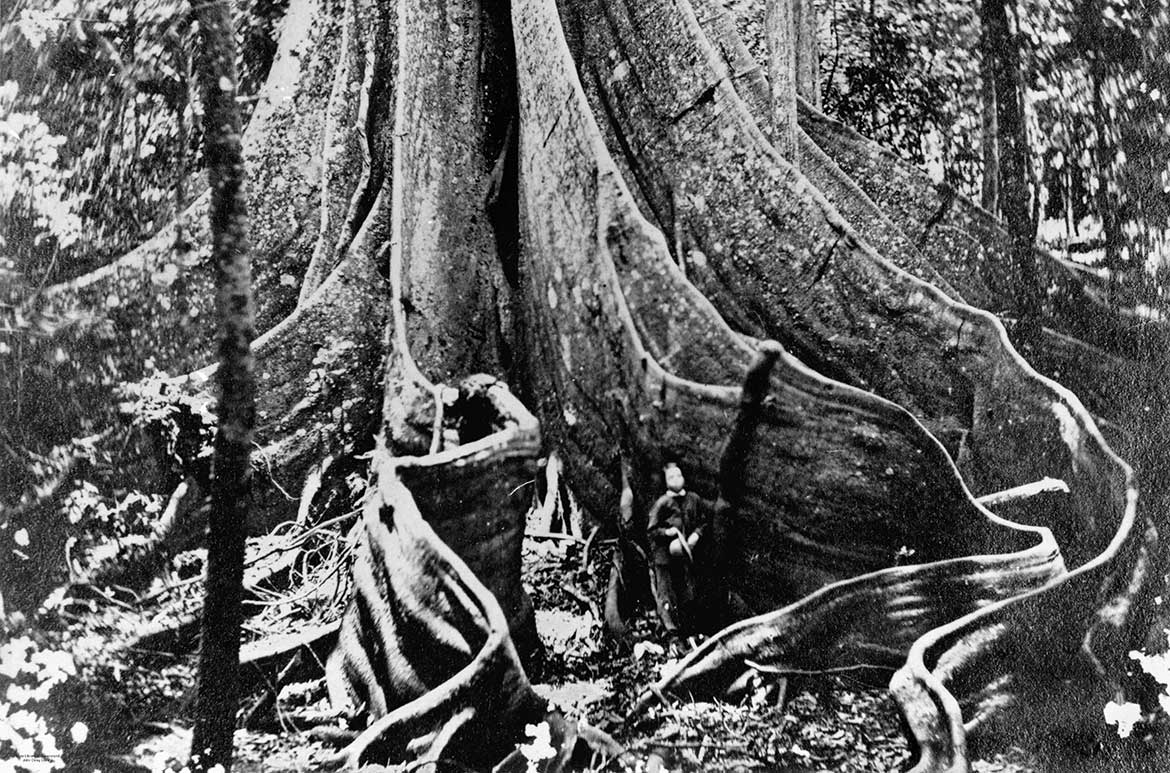
Views towards Fig Tree Pocket 1890
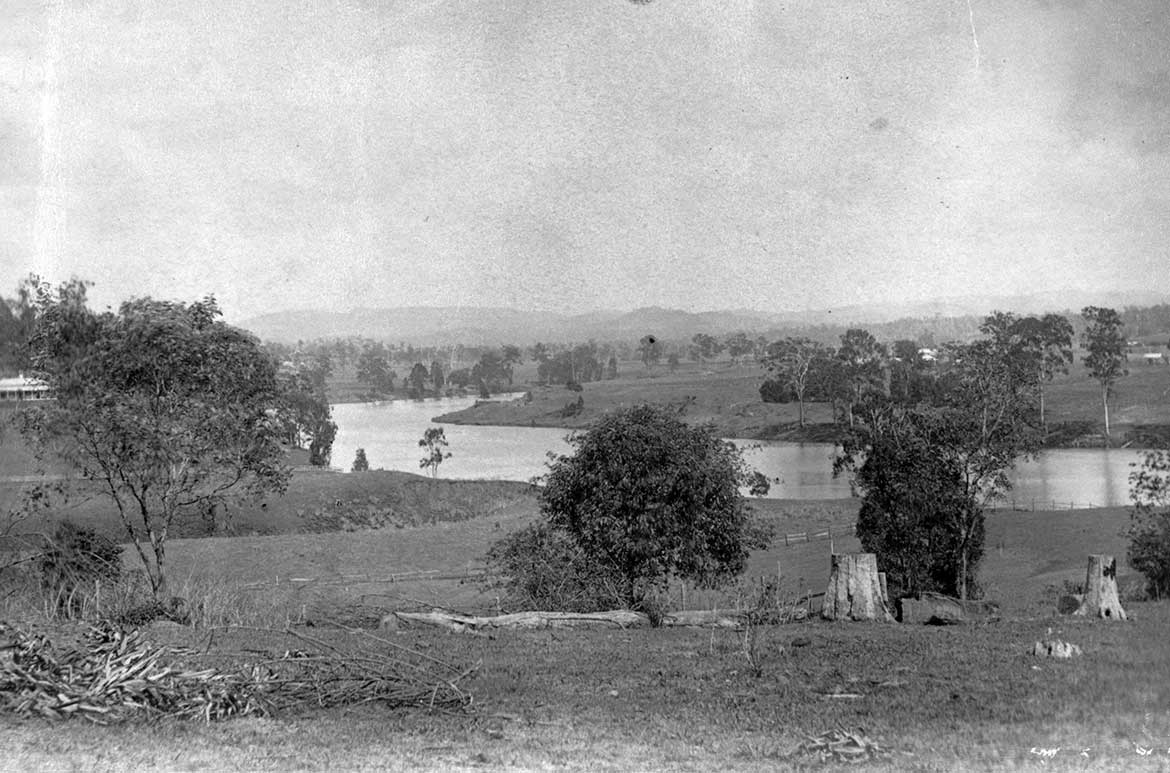
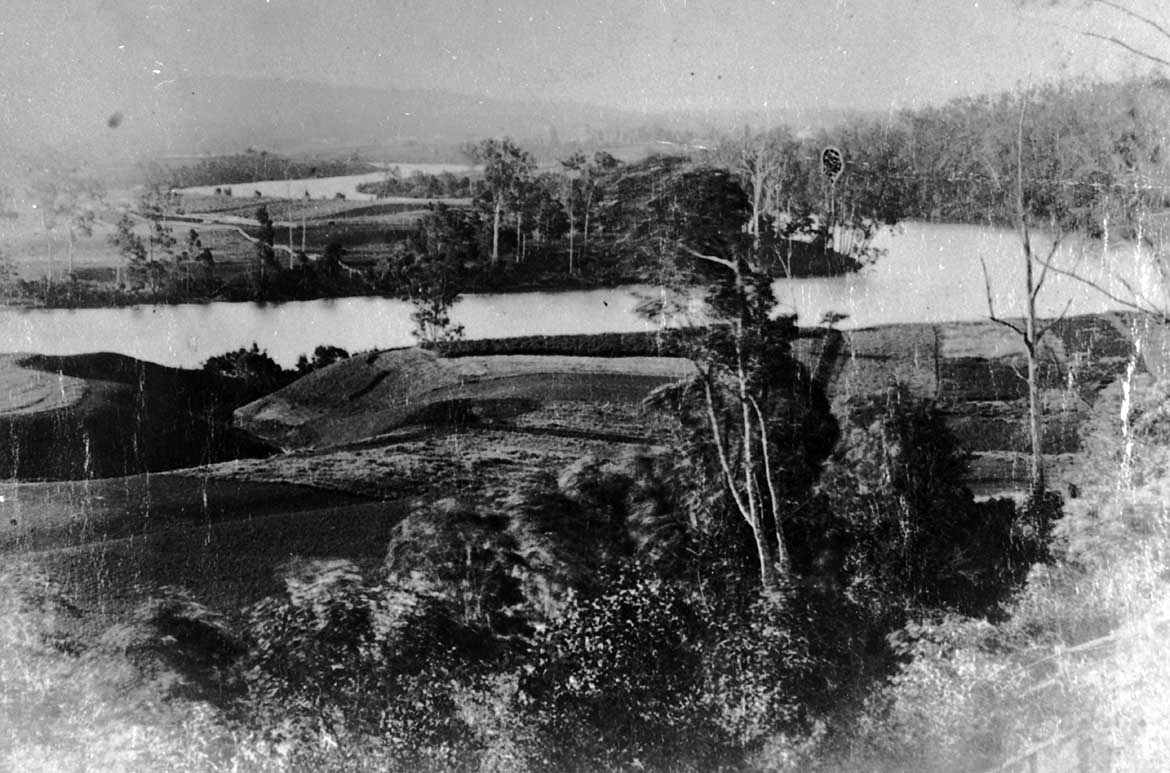
View towards Lone Pine featuring the lone Hoop Pine 1931

Lone Pine was originally an 11-acre (4.6 hectare) site, now 18-hectares in total the Sanctuary has developed into a major Brisbane tourist destination, and as it is accessible from the Brisbane River has also become a tradition for over 70 years to make a day trip with Mirimar Cruises (illustrated). Initially marketed as the most beautiful trip in Australia, the tour departs from the centre of Brisbane for a leisurely hour long scenic cruise up the river arriving at Lone Pine to disembark on the shores of the park.
The ‘Mirimar’ on the Brisbane River 1940

Charles H. Lancaster (1886-1959) painted The homestead, Lone Pine (illustrated) in 1945 depicting the original homestead, its simple form silhouetted against a dark mass of trees. Lancaster’s work focused on the landscape of Brisbane and its outer suburbs, the depictions of which, according to contemporary opinion, manifested a ‘quiet toned mellow serenity’.1 Lancaster was not the only artist to travel to Lone Pine for inspiration, many took the opportunity to go on an excursion to the zoo and surrounds, such as Daphne Mayo some ten years earlier (illustrated).
Charles H. Lancaster ‘The homestead, Lone Pine’ 1945
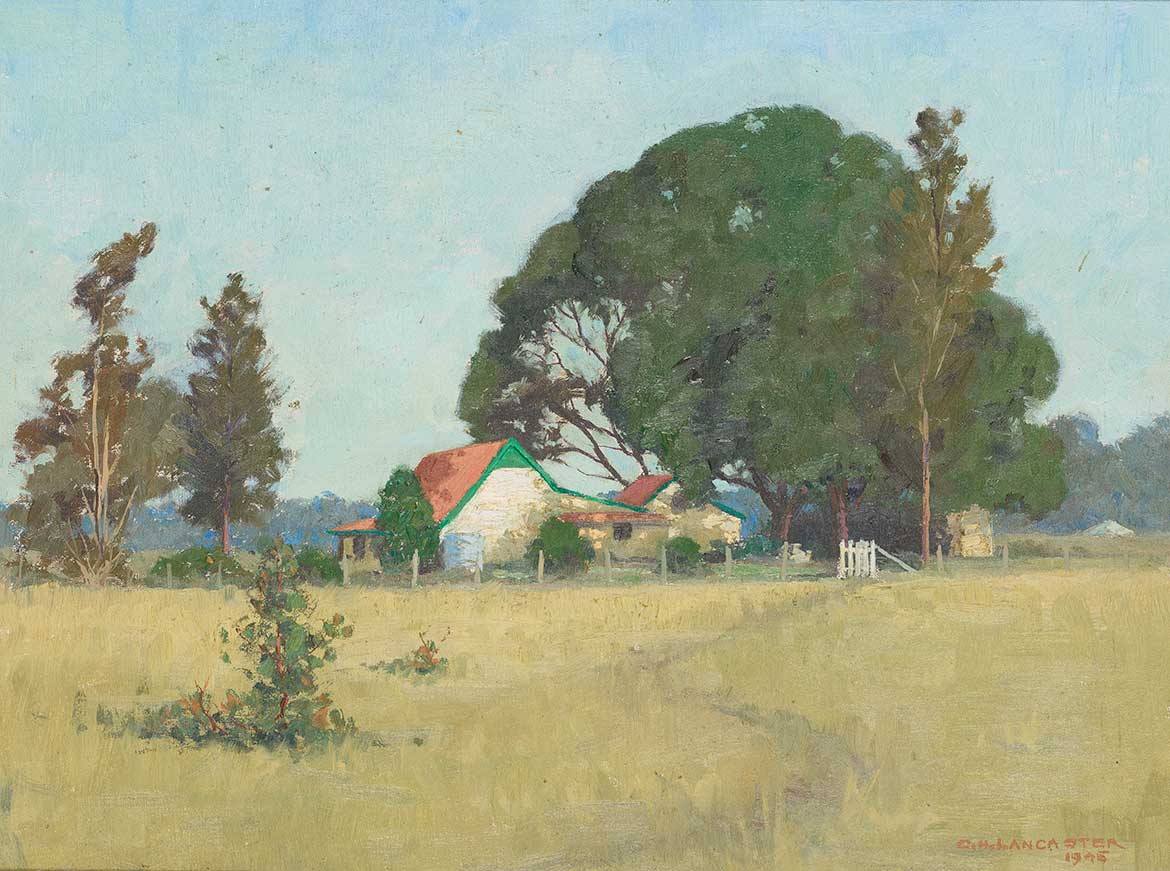
Daphne Mayo modelling a kangaroo 1935
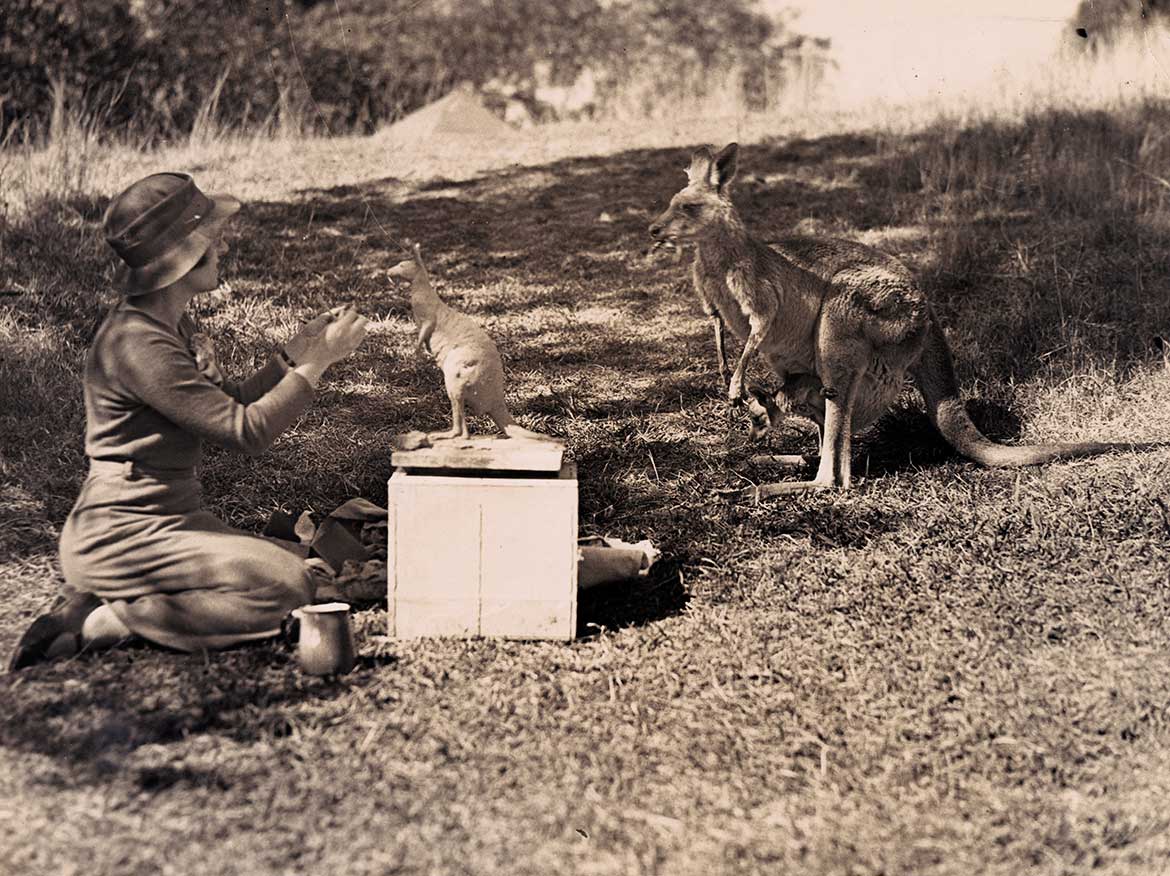
Charles Lancaster
Lancaster was born in Melbourne and studied at the National Gallery School under Frederick McCubbin. When he moved to Queensland he exhibited with the Queensland Art Society from 1914 and was a key figure, serving almost continuously on the committee from 1915 to 1952. Lancaster was also appointed a Trustee of the Queensland (National) Art Gallery from 1939, serving until 1959.
ARTISTS & ARTWORKS: Explore the QAGOMA Collection
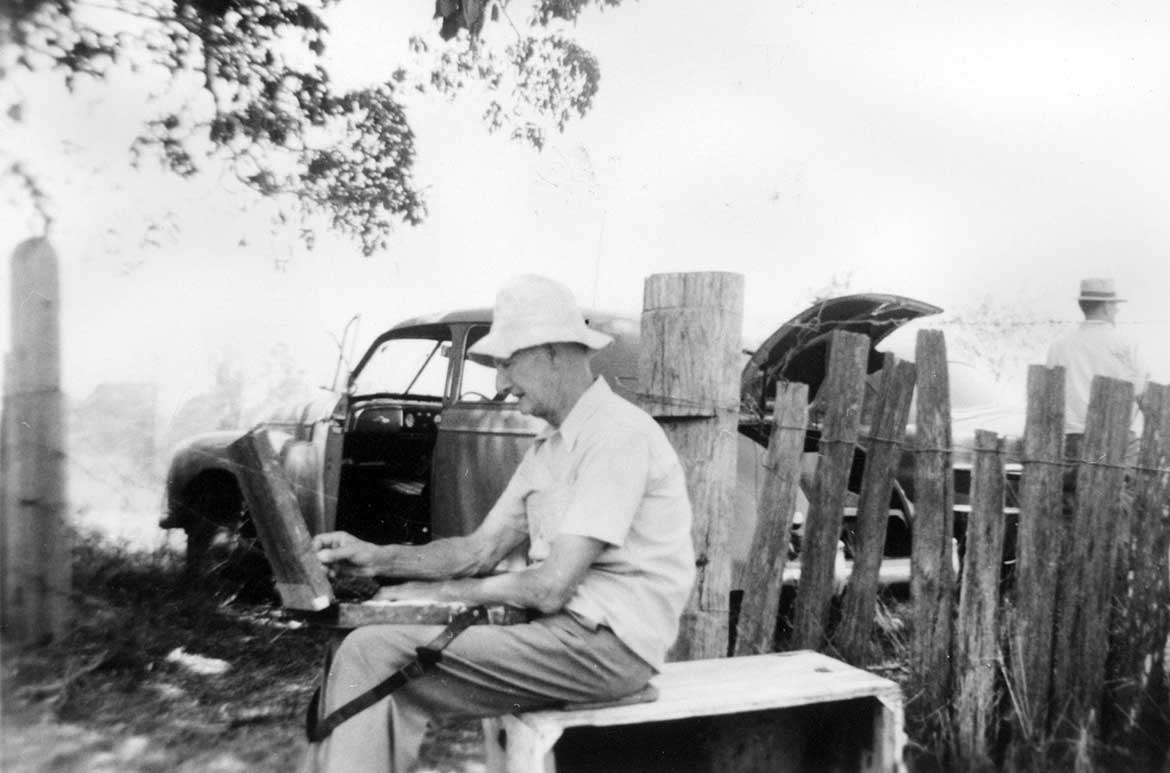
Curatorial extracts, research and supplementary material compiled by Elliott Murray, Senior Digital Marketing Officer, QAGOMA
Endnote
1 ‘Higher standard achieved’. Unidentified press cutting, Brisbane, c.23 Sept. 1935.
Featured image: Daphne Mayo modelling a kangaroo at Lone Pine Sanctuary, 1935 / UQ:418323 / Image courtesy: Fryer Library, University of Queensland, Brisbane
#QAGOMA


